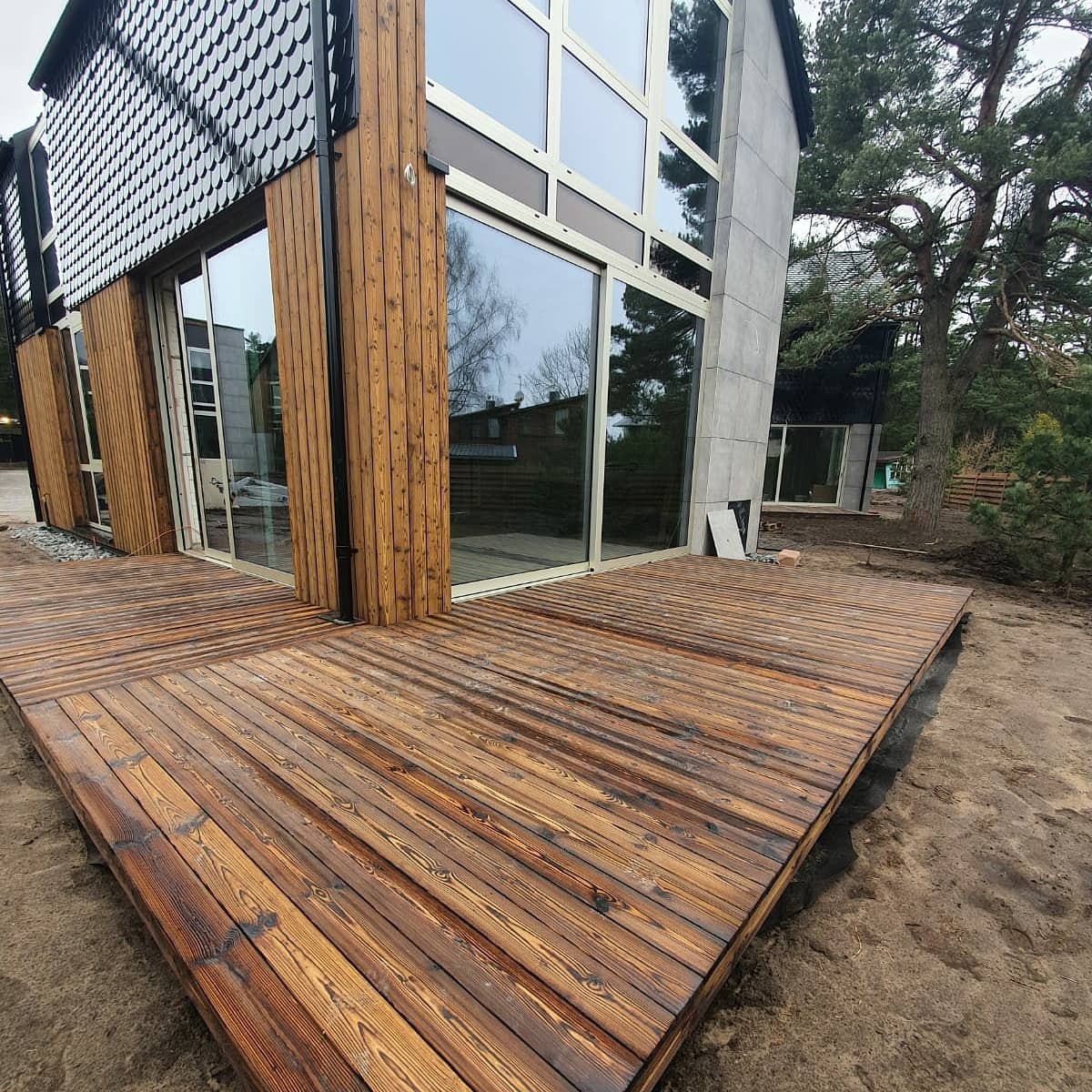What Is the Best Wood for Outdoor Decks?
Outdoor decks create the first impression of your home. They are one of the main features when it comes to the exterior design of a house. You can enjoy a well thought out deck for years on end. Many homeowners attest to spending more time on their decks than they do in their living rooms, more so when the weather allows. When contemplating your outdoor deck, aesthetics are simply not enough. Functionality, both in cost and availability, durability, and overall house typology, play a significant role. In this article, we’ll highlight some of the considerations that you should make when choosing the best wood for your outdoor deck.

Common Wood Options for Outdoor Decks
Most people prefer to use hardwood instead of softwood for their decks. The main reason behind this is that hardened wood is less susceptible to weathering, especially when exposed to the elements. On the other hand, softwoods relieve the buyer of the inflated prices that are often synonymous with hardwood options. These softwoods are treated to become more weather-resistant. Some of the treatment methods include using sealants, staining agents, and pressure-treating.
Wood Stains and Sealants
To seal softwoods, a transparent or semi-transparent water repellant coat is applied to each piece of wood. Sealants with UV stabilizers come highly recommended as they help reduce the sun’s impact on the wood. However, you will need to reapply this coat every year to maintain a lustrous look. When dealing with stain application, you will also need to use stain agents with UV stabilizers. Stain application is so simple that many homeowners prefer to do it themselves. Another additional bonus is that stain treatment also helps retain the overall wood aesthetics.
Unfortunately, the drawbacks associated with staining agents have made them unappealing and unfavorable to some homeowners. The overall maintenance costs combined with the tedious task of continually repairing aged or damaged pieces are some of the few factors. Some of the chemicals used in wood staining pose a dangerous threat to humans, meaning that only trained professionals should handle them. Compared to staining, sealants are relatively less harmful. However, their major disadvantage is that constant recoating of the wood may prove expensive in the long term as most sealants are not particularly long-lasting, especially in areas with high humidity.
Pressure-Treated Wood
Pressure-treated wood refers to wood permeated with chemical preservers to protect it from rot and insect attacks. The wood goes through a depressurized holding tank that removes most of the air content within the wood’s fiber and replaces it with the chemical preserver. The resulting wood is resistant to moisture, fire, and fungal and insect attacks, making it a durable alternative to other treatments. Pressure-treated timber is also easy to use and is available in a variety of sizes. Unfortunately, according to the National Academy of Sciences research, long-term exposure to the arsenic components in pressure-treated wood can increase your risk of skin, lung, and bladder cancer.
Shou Sugi Ban Decks

When it comes to durability, charred timber is the best form of preservation as it is a natural form of waterproofing. Shou Sugi Ban, also referred to as Yakisugi, is a traditional Japanese method of burning wood. When wood is burned in controlled conditions, a layer of char remains on the surface. This layer helps in the prevention of moisture absorption, swelling, and rotting. This type of treatment ensures that the wood becomes resistant to fire, insect, bacteria, and fungi attacks, thanks to the resultant carbon layer.
The timber species we use at Degmeda combined with the stain colors and varied brushing techniques help create a beautiful Shou Sugi Ban deck, both in pattern and texture. This versatility in product design makes burnt wood appealing to developers and homeowners alike. No matter your wood decking ideas, we have numerous tile colors you can choose from, including light charcoal, rich black, dark brown, and red amber. These neutral earth tones create a rustic effect that is much cherished by homeowners for any outdoor setting. We also offer various timber species that you can choose from depending on your preferred taste: spruce, larch, pine, cedar, and Accoya.
Your Outdoor Decking Solution
Shou Sugi Ban is no doubt the best wood for outdoor decks. It is an environmentally-friendly technique that is sustainable and 100% natural. Furthermore, charred timber can last up to 100 years, requiring relatively nothing more than a new oil coat every 10-15 years to enhance its longevity even further. No matter which tile you choose, our unique and unrivaled products will add a charming effect to your outdoor deck. At Degmeda, our quality charred wood is also perfect for all your flooring, cladding, decking, and fencing projects. We also offer wood charring services to interested clients. For further information, visit our website and get in touch with us today.